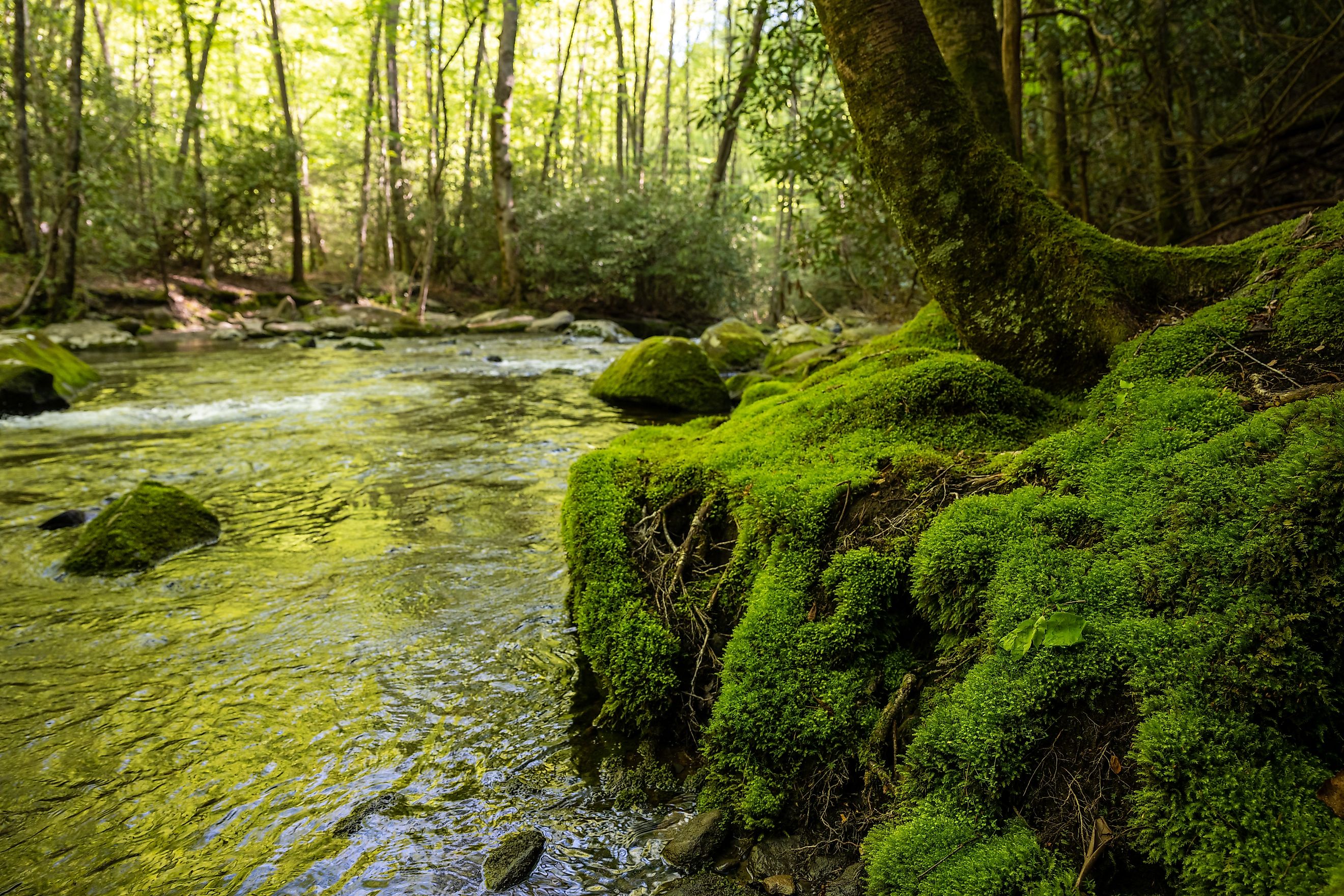
7 Most Rattlesnake Infested Areas in Tennessee
Tennessee is home to top tourist destinations that showcase its stunning natural beauty, from the Great Smoky Mountains National Park to the Cumberland Plateau and the Natchez Trace Parkway. These iconic spots, with their scenic trails and lush forests, are also home to about 32 species of snakes, of which only two are rattlesnakes: the Timber Rattlesnake (Crotalus horridus) and the Western Pygmy Rattlesnake (Sistrurus miliarius). These creatures play a vital role in the ecosystem by keeping rodent populations in check. Outdoors lovers, hikers, and adrenaline seekers should tread carefully and respect the balance of nature when visiting any of these seven most rattlesnake-infested areas.
Great Smoky Mountains National Park
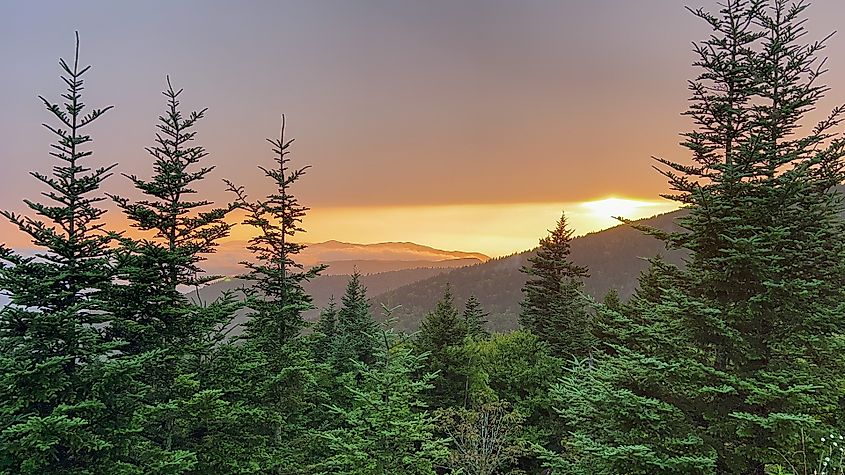
While the Smoky Mountains are renowned for their diversity of wildlife, including elk, black bears, and deer, hikers might encounter the timber rattlesnake, the only one of its kind in the rugged Appalachian trails. The Great Smoky Mountains National Park is the most visited in the United States, and the Smoky Mountain Range offers ideal conditions for timber rattlesnakes, especially on hillsides and forested slopes. Hikers, attracted by 800+ miles of trails like the popular Clingmans Dome, the highest peak in the park at 6,643 feet, should listen for warning rattles and be cautious around rocky outcrops where the rattlers like to sunbathe.
Cherokee National Forest
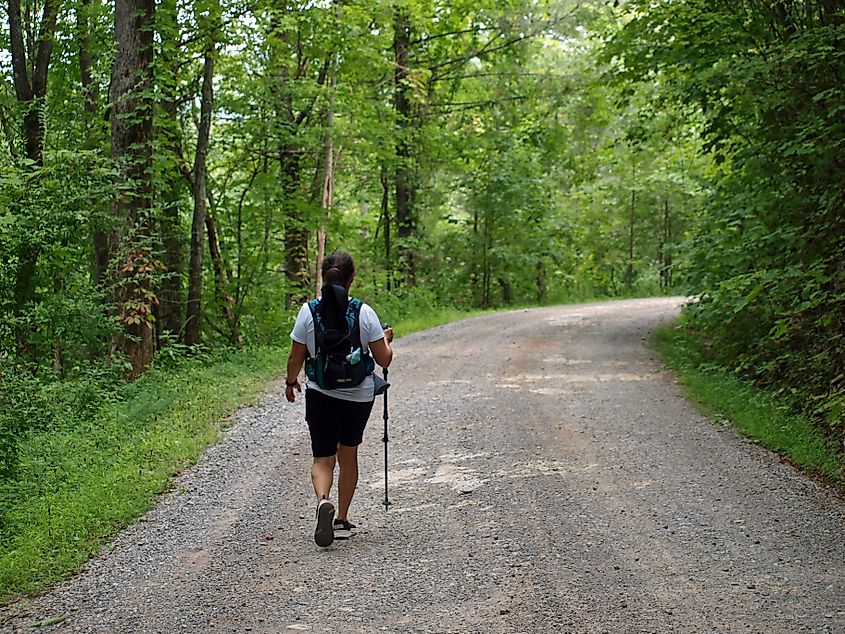
There are 154 national forests in the U.S., comprising 193 million acres of land. The Cherokee National Forest is a vast 650,000-acre forest in eastern Tennessee along the border with North Carolina. The forest is a must-see destination for hikers who are drawn to the 600+ miles of hiking trails, including 150 miles of the renowned Appalachian National Scenic Trail; Kayakers and white water rafting enthusiasts looking for thrills on the world-class Ocoee River; and wildlife lovers and photographers in search of black bears, white-tailed deer, and reptiles like snapping turtles and salamanders. Timber rattlesnakes also make their homes on the steep ridges and dense woods. Still, the Tennessee Wildlife Resource Agency has listed the species as a population on the decline in the state due to loss of habitat, road accidents, and illegal wildlife trade.
Cumberland Plateau
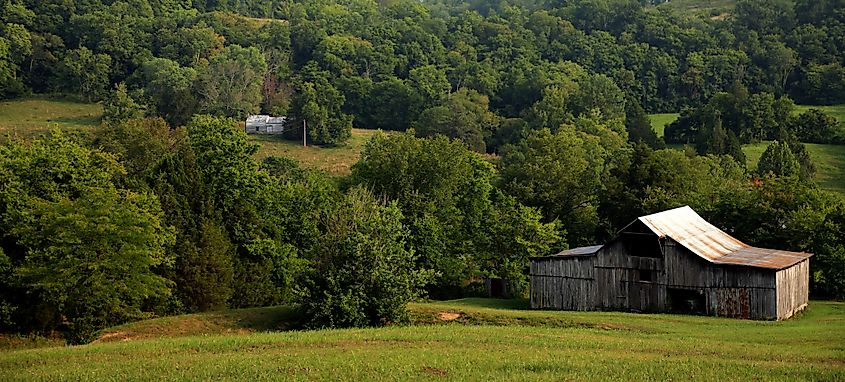
The timber rattlesnake is the largest and most dangerous of the two rattlesnakes in Tennessee and the only one in east Tennessee in areas like the 1,000-foot-high Cumberland Plateau. The snakes prefer the mature, heavily wooded forests with rocky escarpments on the plateau's south side, which provides the perfect habitat for timber rattlers. On the plateau, these heavy-bodied snakes are typically as long as five feet and have a large, triangular-shaped head, vertical pupils, heat-sensing facial pits, and a telltale rattle at the end of their tail, which they use to warn off predators. Two areas within the plateau where hikers may spot a timber rattlesnake include the South Cumberland State Park and Savage Gulf State Park.
Big South Fork National River and Recreation Area
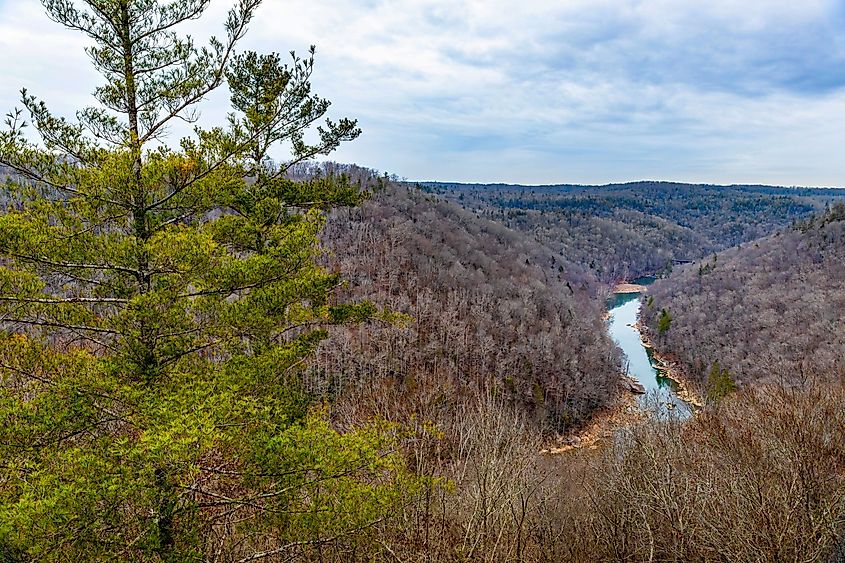
The Big South Fork National River and Recreation Area is one of Tennessee’s 14 national parks encompassing 125,000 acres of the Cumberland Plateau. It is renowned for its stunning gorges, sandstone bluffs, and forests, attracting outdoor recreation seekers and timber rattlesnakes. The area’s distinct landscape was shaped by “river scouring,” a process of erosion that has created the deep gorges, cliffs, and rock formations unique to the area. The timber rattlesnake can be found in the park, mainly where the river’s erosion has created steep, rocky hillsides and cliffs, which provide perfect cover and hunting grounds for the rattler. While these creatures are generally found on land, they have been occasionally spotted in water in Big South Fork, a tributary of the Cumberland River, so paddlers should exercise caution.
Land Between the Lakes National Recreation Area
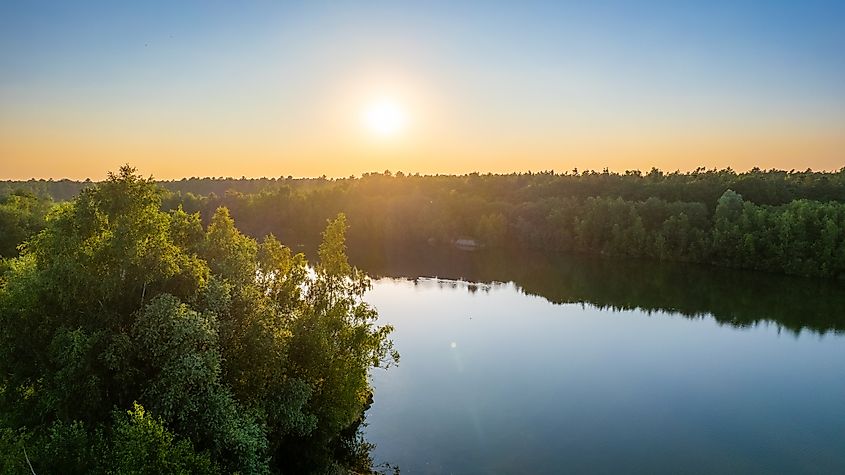
A serene sunset over a still lake.
The Land Between the Lakes National Recreation Area is so named because it is a 170,000-acre inland peninsula between Kentucky Lake and Lake Barkley, with about 110,000 acres in Kentucky and 60,000 acres in Tennessee. The Tennessee portion is primarily located in Stewart County and includes key sites such as the South Bison Range and the Homeplace 1850s Working Farm, offering unique opportunities for outdoor exploration and historical education. This region is home to 26 species of snakes, including the timber rattlesnake and the threatened western pygmy rattlesnake. The latter is found near aquatic habitats in the Land Between the Lakes National Recreation Area and is considered an excellent swimmer. In Tennessee, the small, colorful western pygmy rattlesnake is listed as threatened and considered rare.
Natchez Trace Parkway
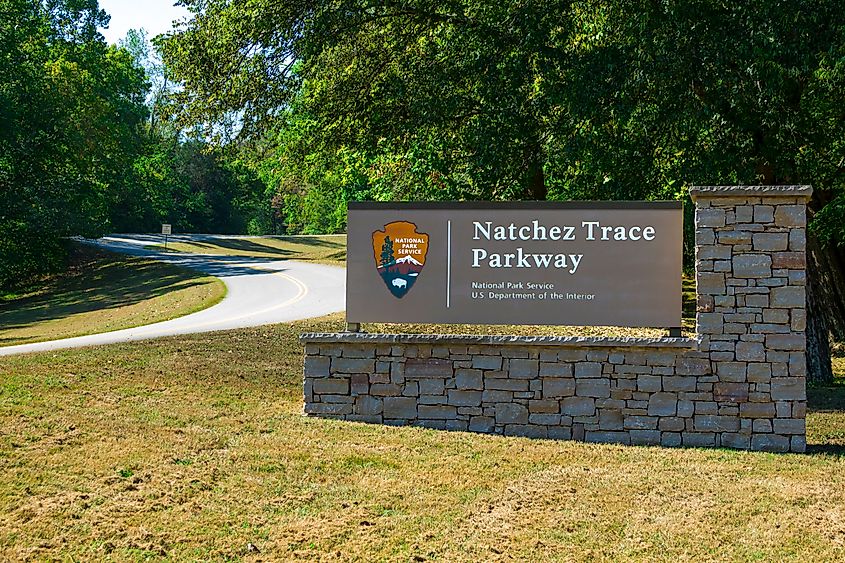
The forested areas and hills along the historic 440-mile Natchez Trace Parkway are home to over 25 species of snakes, including the timber rattlesnake. Stretching from Nashville to Natchez, Mississippi, the trail runs through forests, wetlands, and grasslands, with plenty of opportunities for outdoorsy types to hike, bike, and view wildlife along the route. While the likelihood of seeing a rattlesnake is rare, visitors to the parkway should watch where they are walking or putting their hands, as most bites occur on the hands, feet, and ankles. All wildlife, including venomous snakes, is protected along the Natchez Trace Parkway.
Tennessee River Valley
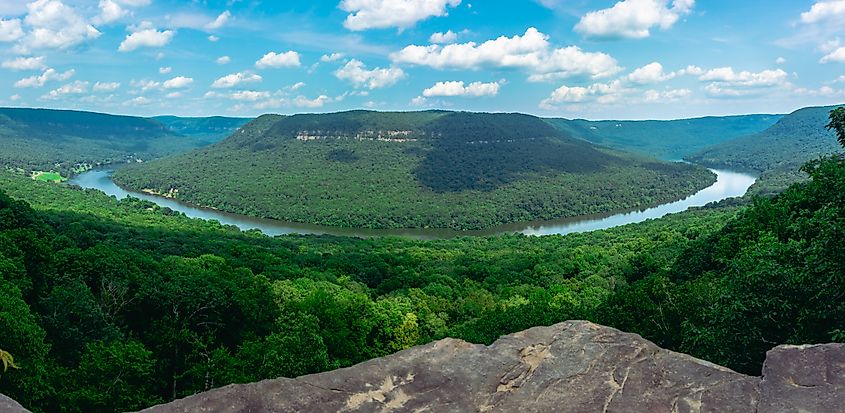
Another timber rattlesnake hotspot is in the Tennessee River Valley. Called the “Great Lakes of the South,” this geologically diverse region is a paradise for outdoor adventurers interested in activities ranging from whitewater rafting to rock climbing and bouldering to hiking. The area is defined by the Tennessee River, which flows through the valley from the Appalachian Mountains to the Mississippi River. The timber rattlesnake is found in the forested areas surrounding the river and the hilly terrain of the valley's foothills in dense vegetation, rocky outcrops, and places near water sources, such as the Tennessee River and its banks, where they can hunt small mammals, birds, and amphibians.
Key Takeaways from Tennessee's Rattlesnake Habitats
Tennessee has several rattlesnake-infested areas, including the Great Smoky Mountains National Park. The Cherokee National Forest, with over 600 miles of hiking trails, is a prime habitat for these snakes, while the Cumberland Plateau provides a perfect environment for timber rattlers in its mature forests and rocky escarpments. The Big South Fork National River and Recreation Area features steep hillsides and cliffs where rattlesnakes thrive. Other areas, like Land Between the Lakes National Recreation Area and the Natchez Trace Parkway, also host these snakes, including the rare western pygmy rattlesnake. Lastly, the Tennessee River Valley offers a diverse landscape with ideal conditions for rattlesnakes to hunt and hide.











